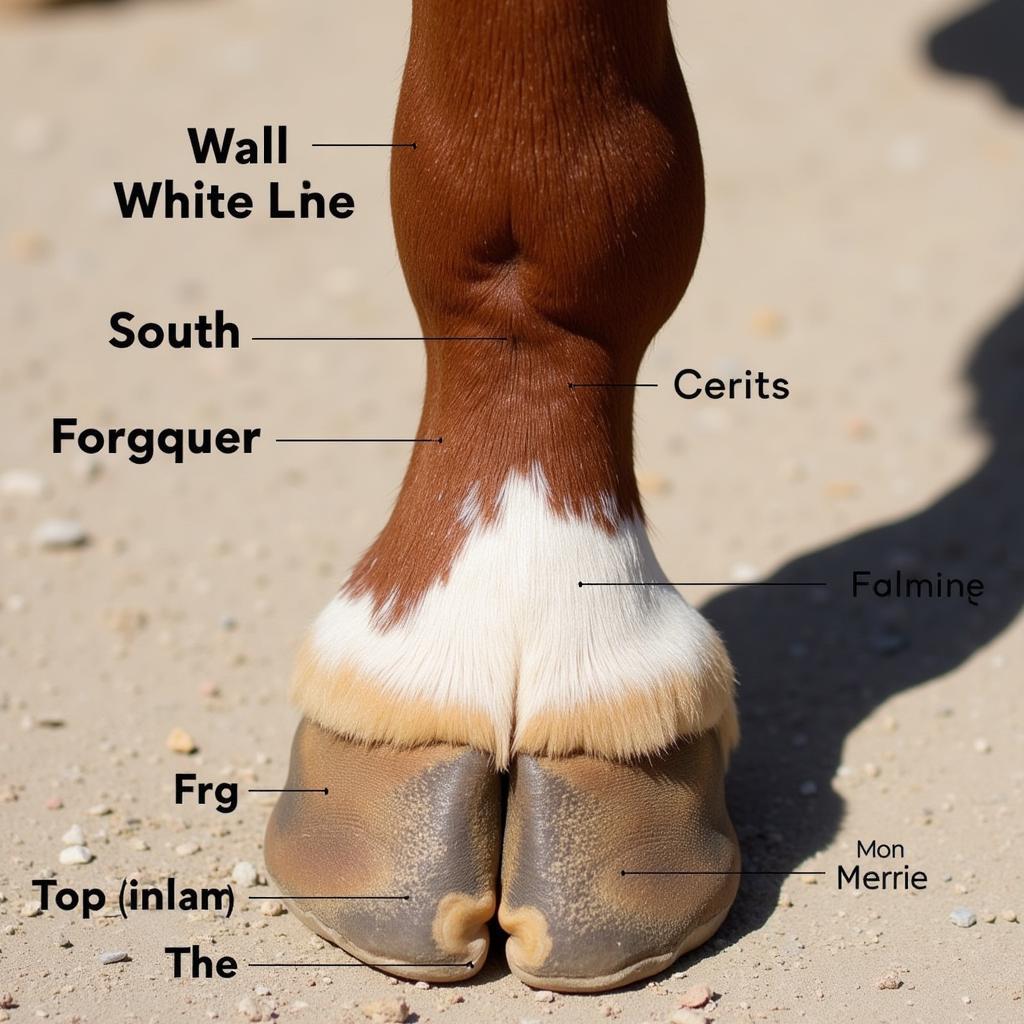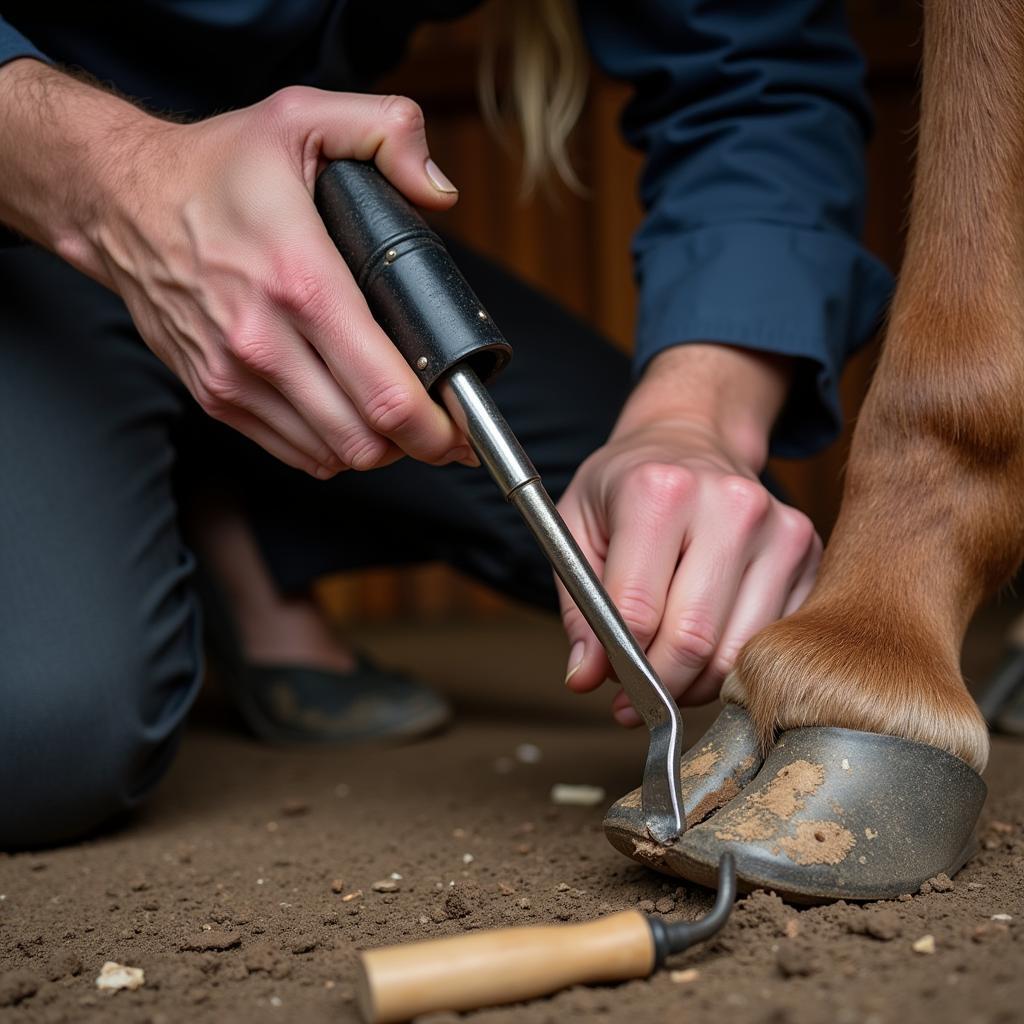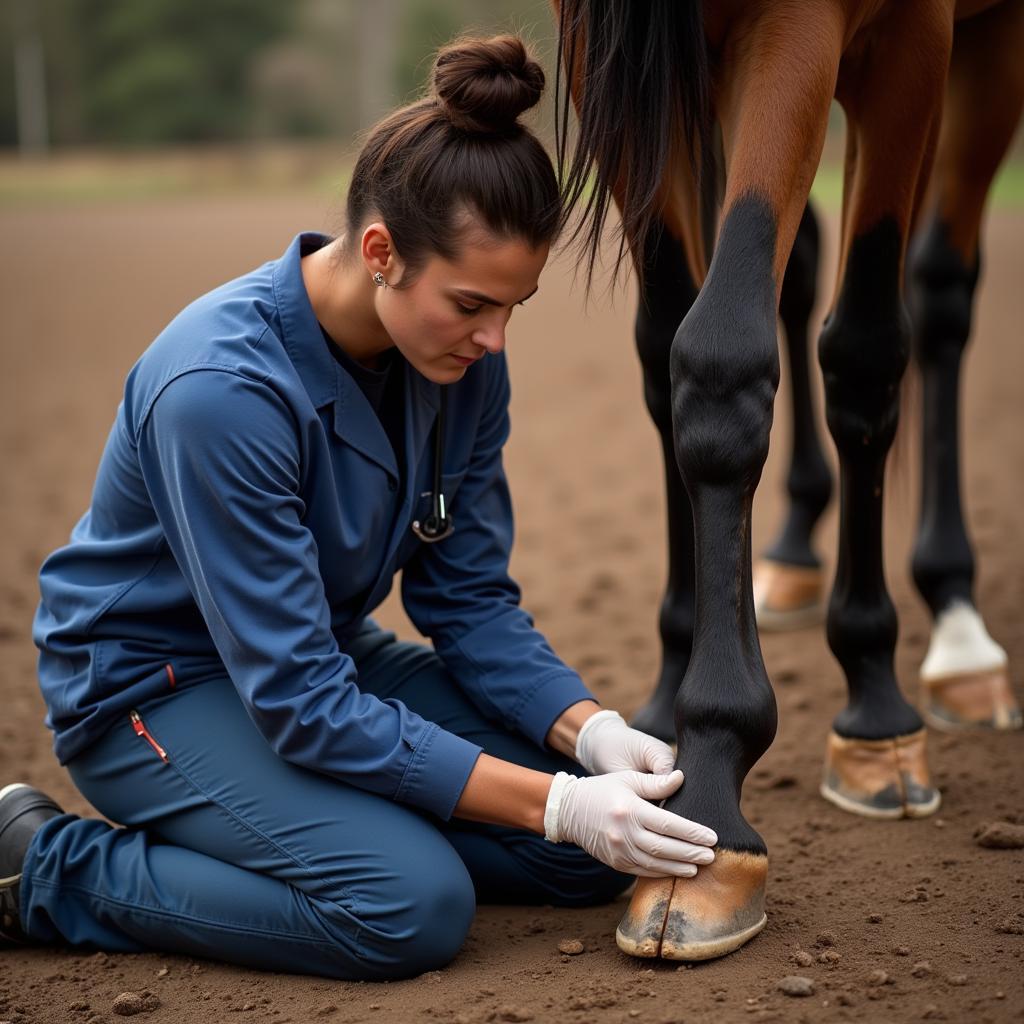Your horse recently had its hooves trimmed, but now it’s showing signs of soreness. This is a common concern for horse owners, and understanding the reasons behind post-trim soreness can help you provide the best care for your equine companion.
 Horse Hoof Anatomy
Horse Hoof Anatomy
Why is My Horse Sore After a Trim?
Several factors can contribute to a horse being sore after a trim. Here’s a breakdown of the most common culprits:
-
Taking Off Too Much: Just like our own nails, taking off too much hoof can expose sensitive tissues. If the farrier accidentally trims the hoof too short, it can result in soreness, especially in the sole or frog area.
-
Thin Soles: Some horses naturally have thinner soles than others, making them more prone to discomfort after trimming.
-
Incorrect Angles: The angles of the hoof are crucial. If the hoof is trimmed at an incorrect angle, it can put uneven pressure on the internal structures, leading to pain and potential lameness.
-
Underlying Conditions: Sometimes, soreness after a trim can be a symptom of an underlying condition like laminitis, abscesses, or navicular disease.
 Farrier Trimming Horse Hoof
Farrier Trimming Horse Hoof
Signs Your Horse is Sore After a Trim
Recognizing the signs of post-trim soreness early on is vital for addressing the issue promptly. Watch out for these telltale signs:
-
Reluctance to Move: Your horse might be hesitant to walk or move around freely.
-
Short, Choppy Strides: Instead of their usual fluid gait, a sore horse might take short, choppy steps.
-
Head Bobbing: Horses often bob their heads in an attempt to shift weight off their sore hooves.
-
Increased Digital Pulses: Check the back of your horse’s pastern (the area just above the hoof) for a strong digital pulse, which can indicate inflammation.
-
Heat in the Hoof: Feel your horse’s hooves for any unusual heat, another sign of potential inflammation.
What to Do if Your Horse is Sore After a Trim
If you suspect your horse is sore post-trim, take these steps:
-
Contact Your Farrier: Call your farrier immediately. They can assess the situation and determine if the soreness is due to the trim itself.
-
Provide Rest: Reduce your horse’s activity and allow them to rest on a soft, level surface.
-
Cold Therapy: Applying cold therapy, like hosing the hooves with cold water or using ice packs, can help reduce inflammation.
-
Pain Relief: Your veterinarian might recommend pain relief medications like non-steroidal anti-inflammatory drugs (NSAIDs).
 Veterinarian Examining Horse Hoof
Veterinarian Examining Horse Hoof
Preventing Post-Trim Soreness
Here are some proactive steps to minimize the risk of your horse experiencing soreness after a trim:
-
Regular Trimming Schedule: Stick to a consistent trimming schedule every 6-8 weeks. This helps prevent hooves from getting overgrown, reducing the amount of hoof that needs to be removed at each trim.
-
Experienced Farrier: Choose a skilled and experienced farrier who understands your horse’s individual needs and hoof conformation.
-
Gradual Changes: Avoid making drastic changes to your horse’s hoof angles or shoeing. Gradual adjustments are less likely to cause soreness.
-
Proper Nutrition: A balanced diet rich in biotin, zinc, and other essential nutrients supports healthy hoof growth.
When to Consult a Veterinarian
While some soreness after a trim might be minor, it’s crucial to seek veterinary attention if:
- Severe Lameness: Your horse is severely lame and unable to bear weight on the affected hoof.
- No Improvement: The soreness doesn’t improve within a few days, despite rest and other measures.
- Signs of Infection: You notice swelling, discharge, or a foul odor from the hoof, indicating a potential infection.
Conclusion
A horse being sore after a trim is a common issue, but with proper care and attention, you can help your equine partner recover quickly and comfortably. Remember that maintaining a regular trimming schedule with an experienced farrier, along with providing a healthy diet and environment, are key to ensuring your horse’s hoof health.
If you have any concerns about your horse’s hoof health or are unsure about post-trim soreness, don’t hesitate to contact a qualified veterinarian or farrier for advice.
Need Help? Contact our expert team at Justus Horses USA. We’re here to help you provide the best care for your horses.
Phone: 0772127271
Email: [email protected]
Address: QGM2+WX2, Vị Trung, Vị Thuỷ, Hậu Giang, Việt Nam
Our customer support team is available 24/7 to assist you.